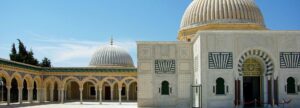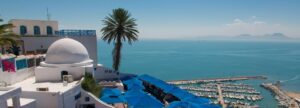Important export port and important tourist center
After Tunis and Sfax, Sousse is the country's third largest city, the most important industrial center with a large trading and fishing port and the market center of the northern Sahel (transition from desert to dry savannah). The city itself offers many sights, atmosphere and Arabic originality. On the entire Tunisian coast, Sousse is probably the place that offers the most to the active guest.
Built in the 9th century BC. BC by the Phoenicians as a trading post with the name Hadrumetum, the city escaped destruction by the Romans in the 3rd Punic War because it was able to break away from Carthage in time. Under the rule of the Romans, Sousse experienced an economic boom until the 3rd century. In the 5th century, the Vandals replaced the Romans as rulers. The Arab invasion in the 7th century finally led to the destruction of the city, now known as Susa. It was not until the Aghlabids that it restored its former glory in the 9th century and re-founded it under the name of Sousse. The city experienced a rapid rise as the port of Kairouan and the starting point for the Arab conquest of Sicily. The Aghlabids built the Ribat to protect against attacks from the sea, followed by the Khalef el Fatah tower, the Great Mosque and finally the Kasbah fortress with a large city wall - buildings that still shape the cityscape today.
In the 12th century, Sousse was occupied by the Sicilian Normans, followed by attacks by the Spanish, Venetians and French, which gradually led to the city's decline. The economic boom only began with the French colonial period from 1881, initially as an export port for phosphate, salt from the nearby salt pans and agricultural products from the hinterland. Olive oil, traditional handicrafts, weaving and fishing also play an important role. The current economic importance of Sousse is based, as in the past, mainly on its role as an export port. Today's old town of Sousse is one of the most beautiful in the country.
If you enter the old town from the center square, the Great Mosque is directly on the left, built in the 9th century, which is reminiscent of a fortress with its round corner towers and tin walls. Diagonally across from the mosque is the oldest Islamic building in Sousse, the Ribat. This fortress was also built in the 9th century and served as a defense structure against Christian attacks from the sea and Berber raids from the inland, but not least as a kind of monastery building.
If you leave the old town at the highest point, you will find the Kasbah with its archaeological museum. The landmark of Sousse - the 30 m high Khalef el Fatah tower - still has its original shape and function as a signal tower. In the past it was used as a message broker through light signals, today as a lighthouse for shipping, the tower may not be climbed.






